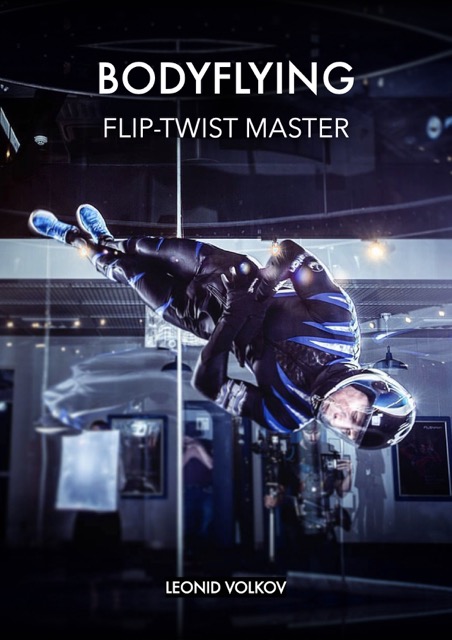

Mostly, the twist is performed at the moment when the body starts transitioning into a vertical head-down position. This means that the rotation around the vertical axis does not begin immediately but rather during the phase when the body is approaching an inverted position. However, in some cases, the twist can be initiated at the moment when the rotation for the flip begins, meaning while the body is still in a vertical head-up position.
A bodyflyer can control the speed of the twist, which affects the range of the angle in which the rotation occurs. With a smooth rotation, the twist can cover approximately until 270 degrees of a flip trajectory, whereas with a very fast and sharp rotation, the twist can cover approximately 30 degrees of a flip trajectory. Controlling the speed of the twist allows the element to be adapted to the specific flight dynamics and movement transitions.
In this course, we will be covering four variations of the Flip-Twist, which are the most popular and basic:
front + body-left direction;
front + body-right direction;
back + body-left direction;
back + body-right direction.
Once you master these four variations of the flip twist, you will be able to combine them, create any mixes, and use different bodyflying positions for entering to the trick (element), during the execution of flip-twist, and for finishing or exiting the element.
If you learn to perform the flip twist using my methodology, it will be no trouble for you to add a second twist during the flip.
I recommend following the steps in order: 1, 2, 3, 4, 5.
For example, step 1 contains an exercise that serves as the fundamental basis for performing the flip twist. Once you go through the foundational exercises and develop the necessary sensations, you can move on to steps 2, 3, 4, and finally step 5.
Now, let’s go into more detail about Step 1.
Step 1 is intuitively structured, and it also includes sub-steps 1, 2, 3, 4, 5, 6, 7, 8, 9 and so on. I recommend following them in order: 1, 2, 3, 4, 5, 6, 7, 8, 9. Each exercise will require a certain amount of time to practice, and every exercise is presented in multiple videos. These videos may be filmed from different angles, in different tunnels, and with varying lighting conditions.
Above each video, you will find a description explaining how to perform the exercise and which bodyflying positions you need to know before starting.
You will learn to perform a flat spin before progressing to a vertical spin. That’s why the initial exercises are designed to be as safe as possible - so there’s nothing to be afraid of. Good wind and lets start the learning process!
